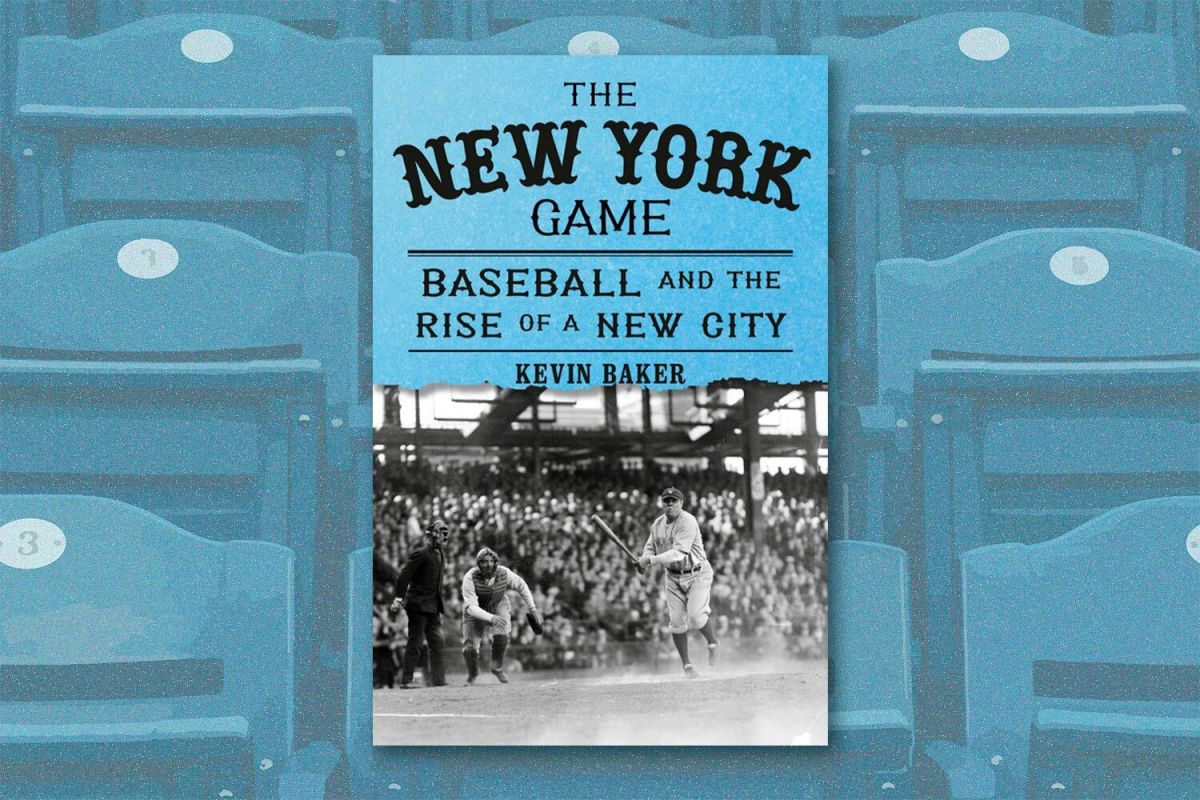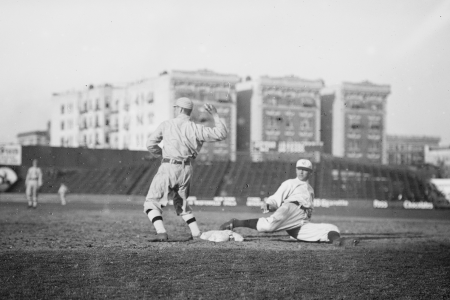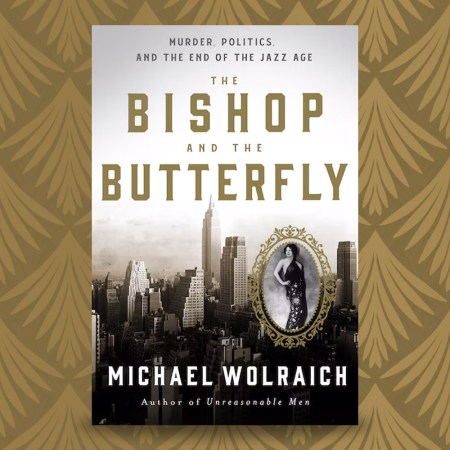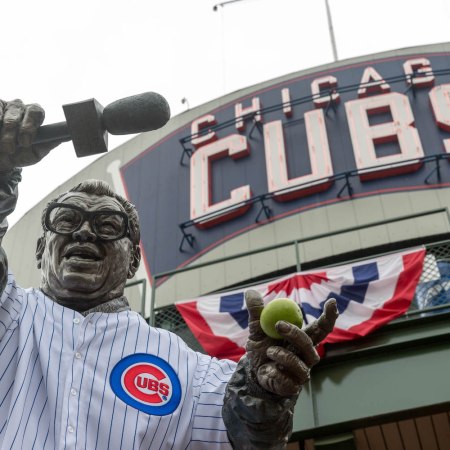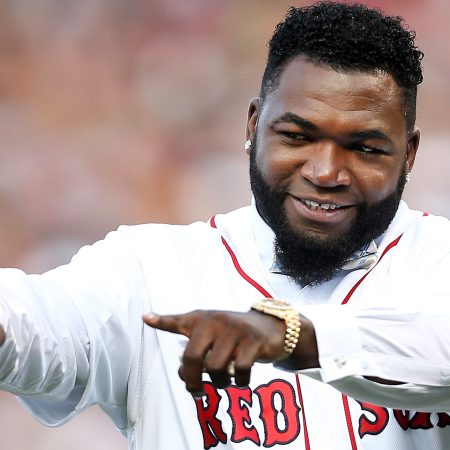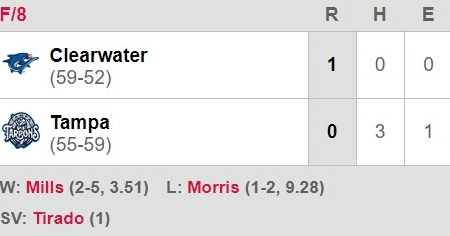Can the history of one sport overlap with the history of one place seamlessly? That’s the argument at the center of Kevin Baker’s new book, The New York Game: Baseball and the Rise of a New City. Through a detailed look at the teams, players and fans who called New York City home in the 19th century and first half of the 20th, Baker neatly illustrates just how rooted in NYC America’s pastime really is.
Baker’s book finds space for both some of the biggest names in baseball history and some of the less-chronicled figures who helped establish the sport and turned it into the game that we know today. InsideHook spoke with Baker about the book’s origins, the sportswriters who informed his take and why Staten Island’s contributions to baseball aren’t as distinctive as its fellow boroughs.
InsideHook: In the acknowledgments for The New York Game, you mentioned this project has been gestating for a while. What was the original genesis of the project? And what were some of the challenges in terms of figuring out what the full scope of the project was and what was going to be included in this book?
Kevin Baker: Book two is coming out in 2026. This one goes from the 1800s to 1945. And then the second book starts around 1945, when Jackie Robinson breaks the color barrier, and goes to the present day.
I have to admit the idea was originally that of my editor Andrew Miller. Almost 25 years ago, I was under contract for a couple books then and I had to write several more just to kind of keep home and hearth together. It was really a labor of love, and it’s really something that came from a lifetime of following the game — a lifetime of reading about researching and living in New York City. So it kind of all came together nicely in that sense.
I don’t think either of us quite understood the scope of it. When I got started, you know, over 100 years of New York City history and baseball history in New York is a lot to go into. A lot happened in the city. A lot happened with the city’s baseball teams. But I hope it makes for a fun narrative to read now.
I’d been aware of Tammany Hall’s presence in the city’s history, but I don’t think I realized there was as much of an interconnection between that and the rise of baseball in New York.
The very first New York major league team in the old National Association, in 1871, were the New York Mutuals, and they were a team owned by Boss Tweed and came out of the Mutual Hook and Ladder company. A lot of the early political machines in New York started from these volunteer fire companies, one of these associations that translated into political power.
Another of Tweed’s companies was the Americus Engine Co., which is why Tammany Hall was always depicted by this tiger that was prominently drawn on the fire engine. And the engine was called the Big Six, and it symbolized overwhelming power. And this is the reason why Christy Mathewson, the first real 20th century superstar of baseball, gets called the Big Six, because that’s what it meant to New Yorkers.
So, yeah, the politics are all tied up throughout.
There was one point where you mentioned one of the older owners of one of the baseball teams and noted that he had a few things in common with James Dolan. Did you find that certain qualities in sports owners ended up being effectively timeless?
Judge McKeever, who was this cranky old man who ran the Dodgers for years and ran them straight into the ground, but was not about to give up the team. And That’s sort of the trouble. You know, the Dolans have squatted over Penn Station in their ugly round bowl of an arena at Madison Square Garden for two generations, most of it tax free — and they still don’t want to move, even though the city desperately needs to redevelop that area.
When the sports owners are in charge, they can be very hard to move. I don’t want to romanticize Tammany Hall; I’m glad we don’t live under it anymore. But when you put private ownership in the saddle, they can be just as obstreperous, just as uninterested in the public good or the public will.
How much of the history that you were going into was readily available? I know you cited a couple of biographies of Lou Gehrig and Joe DiMaggio, but were there specific areas where you had to go deeply into the archives and make some connections that might not have been there before?
I didn’t do a lot of primary research, you know, beyond having watched games since 1966. I was really able to stand on the shoulders of giants here — great baseball writers like Roger Angel, John Thorne, Alan Barra, Bill James and Tom Boswell. Lou Gehrig has two great biographies written about him by Jonathan Icke, and before that by Ray Robinson. There really was no need to do a whole bunch of digging in that sense.
Occasionally I did. It’s fun to do it. But really, you can’t outdo what was being written by some of these people. Back in the old days, New York was where sports writing started, where all these people like Ring Lardner and Grantland Rice and Paul Gallico and John Kieran were writing. They defined it as an art.
I really enjoyed some of the Damon Runyon quotes you had in there as well.
Yeah, he’s another one. Interestingly, the first sports writers did not go down into the clubhouse. In part, they were rushing to file their stories for the afternoon edition or the evening edition. They were on intimate terms with the players because they had to do 27-hour train rides with them in these Pullmans, things like that. They knew them well and they talked to them a lot, but they didn’t rush down there for the immediate post game quote.
I’d like to see us go back to that. Athletes have learned so well what to say and what not to say when somebody thrusts a microphone in front of them that I’d like to see more highlights and less of people carefully saying as little as possible about what happened.
Throughout The New York Game, there are some athletes whose careers end up providing an anchor, like John McGraw and Christy Matheson. Did you have a sense going inthey would end up having that kind of a role, or was that something that evolved as you researched and wrote the book?
I was very leery of doing this. There was a great saying that Stanley Woodward used to say and that Roger Kahn used to write about: no godding up the ballplayers. I didn’t want to concentrate just on the superstars, but I found in many ways the people who did become the biggest stars were stars because they weren’t simply great ballplayers. They also, to a great degree, reflected how the city wanted to think about itself. They reflected a wider kind of zeitgeist going on in the city.
Babe Ruth was this guy who reflected the roaring New York of the 1920s. People like Gehrig and DiMaggio seemed like quiet, classy people with classic American faces, just kind of battling through the Depression and into World War II. Christy Mathewson was bringing this great level of class to a city that was still pretty raw and to a sport that was very raw. It was a time when ballplayers were often not allowed in good hotels. All these people reflected something.
Take James Creighton, the first star of the game, this amazing phenom at a young age, on the eve of the Civil War and early on into the Civil War, wearing a uniform that looks like a soldier’s uniform. He died abruptly at a young age of something that burst in his insides. It really reflected the tragedy that was going on in the city — and everywhere in the United States — about the war with the young people dying suddenly.
This is why these people caught the popular imagination. And so I kind of ran with that for a lot of it, as well as a lot of the fun characters and ridiculous characters. There are a lot of fun stories in here too, I hope.
Remembering the Ballparks of Old New York
Author Kevin Baker shares an excerpt from “The New York Game: Baseball and the Rise of a New City”For much of the book, you juxtapose the city’s three Major League Baseball teams as well as what was happening in the segregated leagues. Was that history more difficult to come about than something on the 1920s New York Yankees? I would imagine it was.
Yeah. Fortunately, there’s been a lot of terrific writing now too on what were then called the Negro Leagues. Adrian Burgos, for instance, wrote a great book about El Cubano, Alex Pompez, this guy in New York who was an amazing leading light in getting Hispanic ballplayers — first from Cuba and then from all over the Caribbean — to New York. He signed generations of them and ended up in the Hall of Fame.
So there was stuff out there too, but yes, there is less written about them. It was less witnessed, you know, and this is the thing to me — that the core of this book is what we think of as baseball today.
Modern baseball really started in New York City and it very much influenced and was reflected in the city that grew up all around it. It was really this melting pot, much as New York itself was, where almost anybody came together to meet or work or play on the field or in the stands. And while that’s a great story, that “almost” is also critical because all too often, almost always it excluded people of color.
That’s the great tragedy of the city, the great tragedy of America, both for the people being excluded, first and foremost, but also for all the rest of us, that we didn’t get to see their contributions. We didn’t get to see, you know, the amazing game they came up with, didn’t get to see them play. And that’s a rotten thing.
There was the really heartbreaking moment you brought up where, in the aftermath of John McGraw’s death, his widow found a list of all of the Black baseball players he wanted to sign. And there’s that question that looms over it: did he try to sign them and did people above him in his organization shut down the idea, or did the social mores of the day prevent him from following through on it?
McGraw, before he was a manager, he was a player — and a very good player. He went to Cuba to play several times in exhibitions. The fans down there loved him. He loved all these Cuban players, this great pitcher, Luis Menendez, and several others. He wanted to bring them up to the majors. And he tried to sneak in a player of color as a Native American — who were allowed to play, under the bizarre racial distinctions of the time.
He was prevented from doing that by Charles Comiskey, the owner of the White Sox, who publicized it and refused to let him do it. And this was on and on. There were always these people who were kind of better inclined. John Montgomery Ward, who formed the first players’ union and started the Players League, which destroyed one major league and almost destroyed both. He wanted to have his union accept black players. He was voted down.
The players, too, didn’t want Black people playing with them. And that was that. W.E.B. Du Bois, with his talented tenth, really thought, “OK, we can reach this point. We’ll show them what we can do. We’ll show white people how smart we are, how well we play baseball, how courageous we are in war. And that will make the difference. They’ll accept us.”
The horrible part is, it didn’t make any difference. No matter how courageous you were, no matter how smart you were, no matter how talented you were. The idea of Victorian propriety going on was that white people didn’t associate with people of color. That’s a terrible thing and it was a terrible blight in our history.
One moment that made my jaw drop came late in the book, where you wrote about a Brooklyn Dodgers game where, before the game started, Jesse Owens sprinted on the field with some of the Dodgers players. At that point in baseball, the game wasn’t integrated yet — and yet you could come so close to it with a moment like that.
One of Jesse Owens’s Olympic teammates, a guy who won a silver medal in the 1936 Olympics, was a guy named Mack Robinson, who was Jackie Robinson’s brother. He was also a very good baseball player. I think he ended up working as a street cleaner because he was older, he couldn’t break the color barrier down at the time. It was horrible.
It became very corrupt, because a lot of baseball owners would rent out their stadiums to Black teams when they were on the road. It was a vital bit of income, so they became heavily invested financially in the status quo. Guys like Clark Griffit,h who ran the Washington Senators, became very invested in not integrating baseball, which was a rotten thing. I think in the end, the vote was 15 to one among owners not to integrate. Only Branch Rickey and the Dodgers voted to integrate. And they were overridden, to the surprise of everyone, by Happy Chandler, the Kentucky Senator, who nobody expected to rise to the occasion, but he did. And baseball was integrated despite itself.
Was there anything you learned while writing the book that surprised you or any mythology around the game that turned out to be true?
A lot of it was a learning process, like learning about how Hispanic athletes came up with the Cuban Stars, and then the New York Cubans. Learning how good the Lincoln Giants and other earlier Black teams were. I don’t think I quite understood how deeply tied to these political machines the teams were. I didn’t realize quite how horrible the Merkel call was — which was made by an umpire hours after the game. It was interesting to learn how many ballparks New York teams played on that were former garbage sites — literal dumps, places with names like “Pigtown.”
I’ve been following the game for a long time. It was fun to debunk some of the myths that have sprung up around them— and to confirm some of them too, like just how great Babe Ruth was.
The anecdote in there about a young Don Mattingly learning that Babe Ruth was real.
When Don Mattingly was a rookie, he was being shown around the Yankee Stadium locker room. The clubhouse guy says, “That was Babe Ruth’s locker.” And Mattingly says, “You mean Babe Ruth was real?” He thought of him like Paul Bunyan. And why wouldn’t you? As one of his teammates said, all the lies about Ruth were true.
For all the bad parts of it, there’s a little something to be said about that America, in that the game was much more informal and much closer to the fans. Players lived among the fans. They walked among them. When the Yankees would play in Philadelphia, they would get off the train at North Station and go walk the rest of the way to the park, a few blocks away. And the cry would go out, “Babe Ruth is coming!” And adults would run to their windows, and kids would run out on the street and jump into his arms. And he’d usually arrive at the park with a couple of kids on his back and in his arms.
I don’t blame the athletes. I mean, you couldn’t do this today. Somebody would sue you — “You dropped my kid!” But I wish we had more of that part of that America still.
In The New York Game, you cover baseball in most of the boroughs of the city — and even a little of how it expanded over the river into New Jersey. But it left me wondering something: is there just not as much history of baseball on Staten Island as the other boroughs?
There were the original New York Metropolitans, who were owned by the same guy who owned the Giants in another league. He sold the team to an individual, Erastus Winan, who had the old St. George cricket grounds near the Staten Island Ferry. You’d get a twofer, you got a ticket on this ferry and a free pass to the park. The year they played there, the first of two years they played there, you could actually see the Statue of Liberty going up just past the center field wall. That sounds great, but nope, no one went, and the team failed there. Later,when the Giants had to move from the original Polo Grounds up to Harlem, they were out there while they got the new park built. The field was in terrible shape by that time.
There had been an outdoor theater there, and the field was often waterlogged. Picture a world champion team, the Yankees or Mets playing in the pond behind Delacorte Theater in Central Park. That’s what the conditions were like. But after that, nobody moved a major league baseball team to Staten Island again. More’s the pity. Maybe in the next century, maybe that will be Staten Island’s major league time.
The Charge will help you move better, think clearer and stay in the game longer. Subscribe to our wellness newsletter today.
